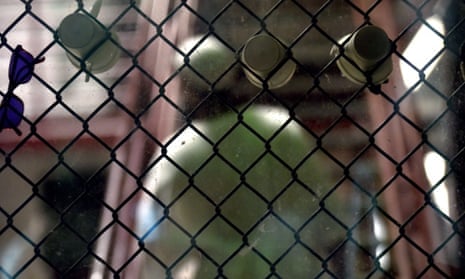CIA operatives subjected at least five detainees to what they called “rectal rehydration and feeding”, a medical practice applied with extreme rarity and known more colloquially as a nutrient enema, according to a Senate intelligence committee report released Tuesday.
The CIA forced the nutrient enemas on two detainees who attempted hunger strikes, a third who “partially refus[ed] liquids”, a fourth “without a determination of medical need”, and a fifth whose case details are not divulged.
Agency operatives had explicitly considered other methods of force-feeding, the report shows, but opted to subject detainees to rectal infusions at least in part because its officers considered them “a means of behavior control”. One medical officer wrote that “[w]hile IV infusion is safe and effective, we were impressed with the ancillary effectiveness of rectal of ending the water refusal.”
According to the report, Abd al-Rahim al-Nashiri was placed “in a forward-facing position … with head lower than torso”, at which point the enema began. An officer described the procedure as “regarding the rectal tube, if you place it and open up the IV tubing, the flow will self regulate, sloshing up the large intestines … [what] I infer is that you get a tube up as you can, then open the IV wide. No need to squeeze the bag – let gravity do the work.” An officer also wrote: “We used the largest Ewal [sic] tube we had”.
In the case of Khalid Sheikh Mohammed, a detainee who has confessed to being the architect of 9/11, the CIA’s chief interrogator ordered rectal feeding “without a determination of medical need”. Abd al-Rahim al-Nashiri and Maid Khan received nutrient enemas after brief hunger strikes, and Abu Zubaydah after he “partially refus[ed] liquids”. At least three other detainees were threatened with rectal rehydration.
Rectal feeding was once considered a legitimate medical procedure. But it is far less safe and efficient than intravenous and tube systems, and so it fell out of use in medical settings in the first half of the 20th century. Nutrient enemas carry greater risks than IV support, including damage to the rectum and colon; food that rots inside the patient’s digestive tract; and an inflamed or prolapsed rectum from careless insertion of the feeding tube.
CIA records showed at least one detainee, Mustafa al-Hawsawi, suffered from an anal fissure, chronic hemorrhoids and symptomatic rectal prolapse after a rectal infusion. The Senate report also found that CIA leadership was notified of allegations that rectal exams were conducted with “excessive force”.
Doctors have questioned the utility of rectal feeding for well over a century, and research performed in the late 19th and early 20th century found the practice had limited utility. While bacteria in the colon do break down some nutrients, the colon and rectum only absorb salt, glucose, a few vitamins and minerals and several minor nutrients. In 1911, Dr W Langdon Brown determined that “there is, in my opinion, no place today in therapeutics for the nutrient enema containing protein or fat.”
In some cases the CIA rectally infused detainees with Ensure nutrition drinks, which include fats and proteins. Officers also administered a “lunch tray” enema to Majid Khan that consisted “of hummus, pasta with sauce, nuts and raisins [that were] ‘pureed and rectally infused’”.
Because the small intestine performs the vast majority of absorption of nutrients, rectal feeding can only keep a person alive for a limited time – possibly up to 10 days – unlike IV delivery, which can support a person long-term. As such, by the 1950s doctors knew that nutrients administered rectally should be pre-processed to maximize value to the patient.
Enemas have been practiced for centuries, usually to clean the bowels and sometimes to administer drugs, and nutrient enemas were once relatively common. When President James Garfield was shot by an assassin in 1881, he was kept alive for several days with enema infusions of “fresh beef, finely minced, in 14 ounces of cold soft water”, along with egg yolk and a bit of whiskey.
The Senate report stresses that the CIA did not have detainees’ survival as its top priority when it administered the enemas. An unnamed person in the report said the enemas helped to “clear a person’s head”, suggesting detainees would be more amenable to cooperation afterward, and a chief of interrogation in characterized the procedure as a demonstration of “total control over the detainee”.
This reasoning has precedent. In the 1860s, a pair of German psychiatrists who ran a private asylum “recommended rectal feeding as a means of avoiding violence and injury” during the treatment of patients who refused to eat – but like rectal feeding it has long been cast aside by the medical community.
